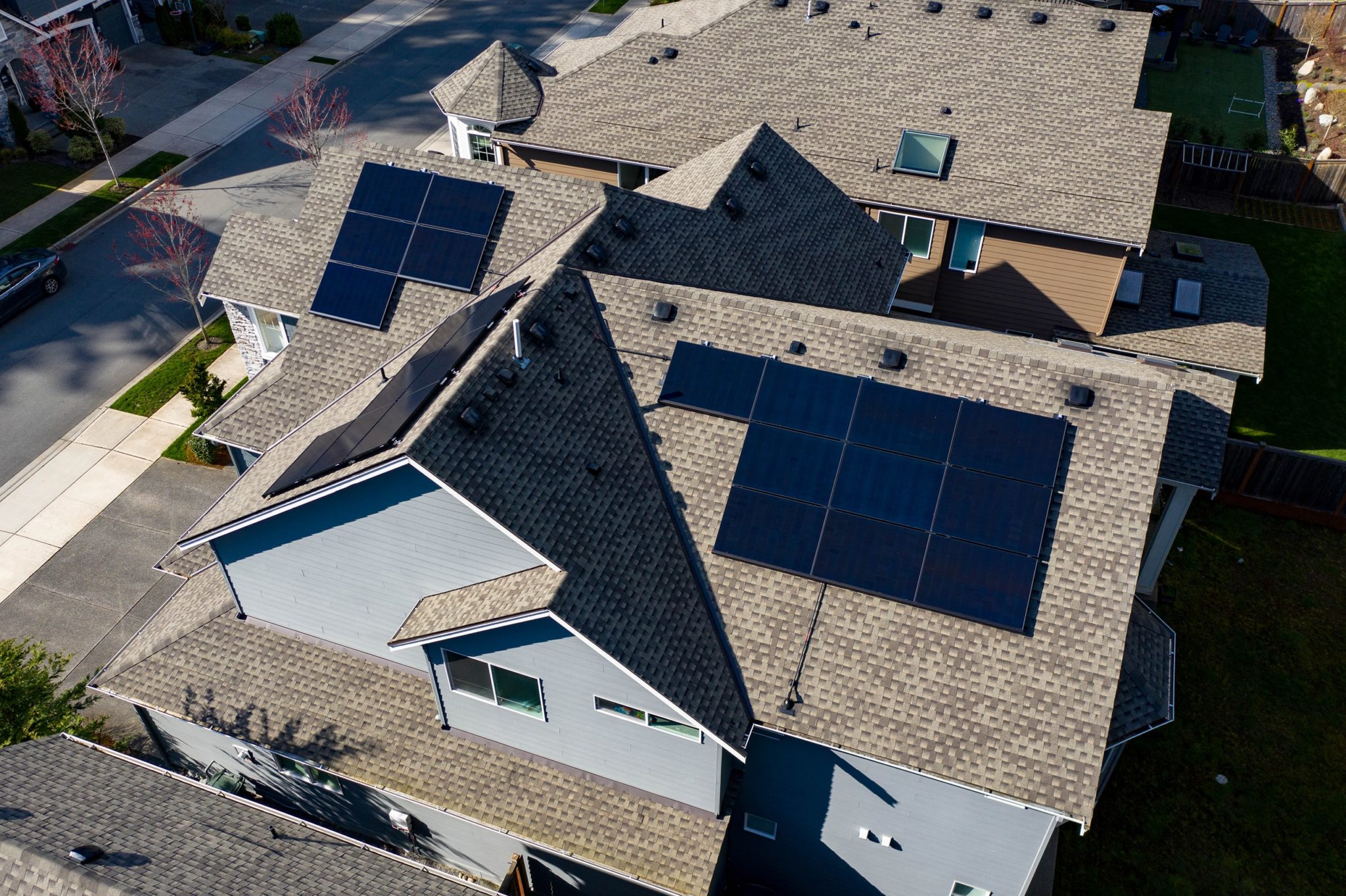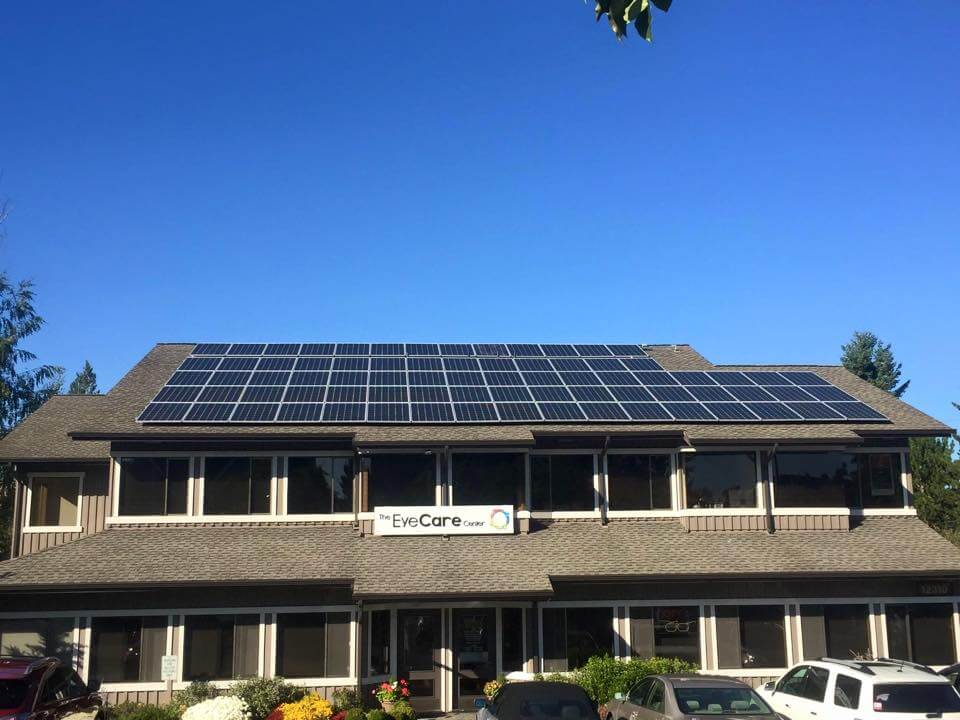
Components That Make Up A Basic Solar System
Photovoltaics (PV): Photovoltaics is the generation of electricity through photons of light produced from the sun.
Solar PV Modules (Solar Panels): When sunlight hits the panels, an electrical charge is produced within the thin silicon wafers, generating an electric current. Solar panels make direct current (DC) electricity.
Inverter(s): The inverter converts the panels’ DC electricity to grid-compatible alternating current (AC) electricity for use in the building. Two main types of inverters for homes include string inverters and microinverter. String inverters can be paired with optimizers, and the combination works similarly to micro inverters. A commercial building with three-phase power requires a three-phase inverter.
Balance of System (BOS): BOS components include roof racking and attachments, conduit and wiring, power safety disconnect (manual shutdown), meter and monitoring unit for online monitoring.
Flow of Electricity
In a grid-tied solar energy system, the solar array (grouping of solar panels) produces DC (direct current) electricity that is converted to AC (alternating current) by an inverter for use in the building and connected to the electric utility. The solar electricity flows into the building breaker panel from the inverter, where it merges with utility-supplied electricity to run lights, heat, appliances, or any other uses. As daytime turns to night, solar generates less, and the grid takes over seamlessly. Because your solar panels generate your electricity, you purchase less from your utility.
When you go solar, you get a new utility net meter that measures electricity in two directions, power from the utility and the power sent to the utility. During bright sunny days, frequently, a solar system generates more electricity than the building needs; the excess energy automatically flows to the utility earning you credits on your utility bill. Net metering is when you pay only for the net amount of electricity you receive from your utility. You still need to pay the minimum monthly fee when you enroll in a net metering program.
Battery Backup: Without batteries, a basic solar system automatically shuts down during a power outage; it is not a backup power source when the grid goes down. When battery backup pairs to a solar PV system, battery power is used during a power outage. The backup battery is a reliable, quiet, clean-energy alternative to a noisy, gas-fired, air-polluting generator. When a Tesla Powerwall battery system pairs to your solar array, not only do you have reliable backup power, but your solar array will continue to generate electricity during a power outage. The batteries and the solar system are eligible for the income tax credit when you install them together or the solar PV system first.
System Design: Our job is to design the best solar system to match your power needs and your roof configuration. NWES’s goal is to generate as much power as you need, install an aesthetically stunning and technologically efficient array, stay within the parameters of any incentive programs as well as your budget, and be fully compliant with electrical and fire safety codes. We will recommend options to you using the equipment we know and trust.

Residential-Size Solar System
The typical home-size solar PV system consists of 10 to 40 solar panels installed on the house or garage roof or a ground mount. Depending on the amount of direct sunshine, the system will generate 50% to 100% of the home’s electricity.
Commercial-Size Solar System
Commercial size systems range from small to medium-size businesses such as the Eye Care Center to large warehouse roofs with rows and rows of solar PV modules.



